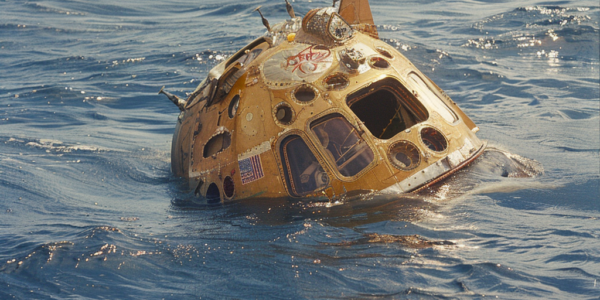Geologists Discover Potential for Creation of Sixth Ocean in Africa
Geologists have discovered a rare geological phenomenon in the African continent’s rift in the Afar Triangle that could potentially lead to the creation of the world’s sixth ocean in the next 5 to 10 million years. This groundbreaking discovery sheds light on the dynamic nature of our planet’s geology and the potential evolution of its landforms over millennia.
New Aetosaur Species Garzapelta Muelleri Discovered
Discover the 215 million-year-old crocodile ancestor species, aetosaurs, and the new aetosaur species named Garzapelta muelleri. Fossils of aetosaurs have been found on every continent except Antarctica and Australia, shedding light on their widespread presence during the ancient era. The fossilized dorsal carapace of Garzapelta muelleri is 70% complete, providing valuable insights into the physical characteristics of this ancient species. Contrary to its carnivorous modern relatives, the study suggests that Garzapelta muelleri was largely omnivorous, adding an intriguing dimension to our understanding of the species’ dietary habits.
Solar Storm Alert Issued After Significant Coronal Mass Ejection from Sun
A solar storm alert has been issued following a significant Coronal Mass Ejection (CME) from the Sun on March 17. The CME is expected to reach Earth on March 20, potentially triggering a geomagnetic storm. NASA’s Solar Dynamics Observatory detected the ‘Canyon of Fire’ eruption, prompting forecasters to issue the alert. The storm could lead to auroras in high latitudes, with the potential for equinox auroras due to the springtime Russell-McPherron effect.
Subduction Zone Below Gibraltar Strait Could Form New ‘Ring of Fire’ in Atlantic Ocean, Study Suggests
A new study suggests that a subduction zone below the Gibraltar Strait could potentially awaken and form a new ‘Ring of Fire’ in the Atlantic Ocean. The study, published in the journal Geology, highlights the significance of studying the Gibraltar arc in its early stages to observe the subduction process. This research provides valuable insights into potential geological changes that could occur in the distant future, shedding light on the early stages of subduction zone formation and its impact on oceanic dynamics.
North America Prepares for Total Solar Eclipse on April 8
Get ready for a total solar eclipse on April 8 as the sun, moon, and Earth align perfectly. The path of totality will traverse parts of Mexico, the United States, and Canada, with an estimated 44 million people residing within it. NASA has provided details on the eclipse’s trajectory, and caution is advised for safe viewing.
Aurora Season in Colorado
This month, the sun is gearing up for a spectacular show of the Northern Lights, also known as the Aurora Borealis, over Colorado. With the sun reaching its peak in sunspot activity near the time of the spring equinox, the conditions are just right for strong displays of this natural phenomenon. As the sun enters Solar Cycle 25, the 25th 11-year cycle since sunspot records began in 1755, the Space Weather Forecasting Center predicts that the peak of solar magnetic activity will occur sometime in 2024, likely between January and October. According to a recent study by NASA solar physicist David Hathaway, March is the most geomagnetically active month of the year, closely followed by October. Auroras are nearly twice as likely in March and October as they are in the winter and summer months. For those interested in witnessing the auroras, it is recommended to look for them in the hours around midnight, starting in the northern part of the sky. In Colorado, an auroral display typically begins as a green glow or arc low on the northern horizon, which then brightens and expands upward as midnight approaches.
NASA Prepares for Looming Solar Storm in 2024
NASA intensifies preparations for an impending solar storm expected to peak in 2024. Recent research reveals insights into diverse solar energetic particles, raising concerns for Earth’s technology and space exploration. Learn about the potential impacts and the latest predictions by the National Oceanic and Atmospheric Administration (NOAA) regarding Solar Cycle 25.
NASA’s Plans for the Next Supervolcano
NASA has proposed plans to potentially shut down a supervolcano if it shows signs of an imminent eruption. New research from NASA and Columbia University suggests that the most powerful scale of eruption would likely not cause global devastation, despite the massive amount of material it would emit into the atmosphere. The study’s lead author, Zachary McGraw, explains that the relatively modest temperature changes found in the research could explain why no single super-eruption has produced evidence of global-scale catastrophe for humans or ecosystems.
SpaceX Crew-7 Mission Successfully Returns Astronauts to Earth
The SpaceX Crew-7 mission successfully concluded as the four astronauts safely returned to Earth on Tuesday, March 12. The recovery of the Dragon capsule, Endurance, was captured live as it splashed down off the coast of Pensacola, Florida. After a 199-day stay in low-Earth orbit, the crew will undergo medical checks to ensure their health.
The Search for the Origin of Life on Earth
The search for the origin of life on Earth has captivated scientists for years. With various theories and hypotheses, researchers are exploring how life could have emerged on a hot and rocky planet like Earth. One popular theory involves the early Earth’s atmosphere, dominated by nitrogen and methane, which could efficiently produce organic compounds. The famous Miller-Urey experiment simulated these conditions and yielded astonishing results, suggesting that lightning, asteroid impacts, and ultraviolet radiation from the Sun could have combined to create the necessary chemicals for life.










